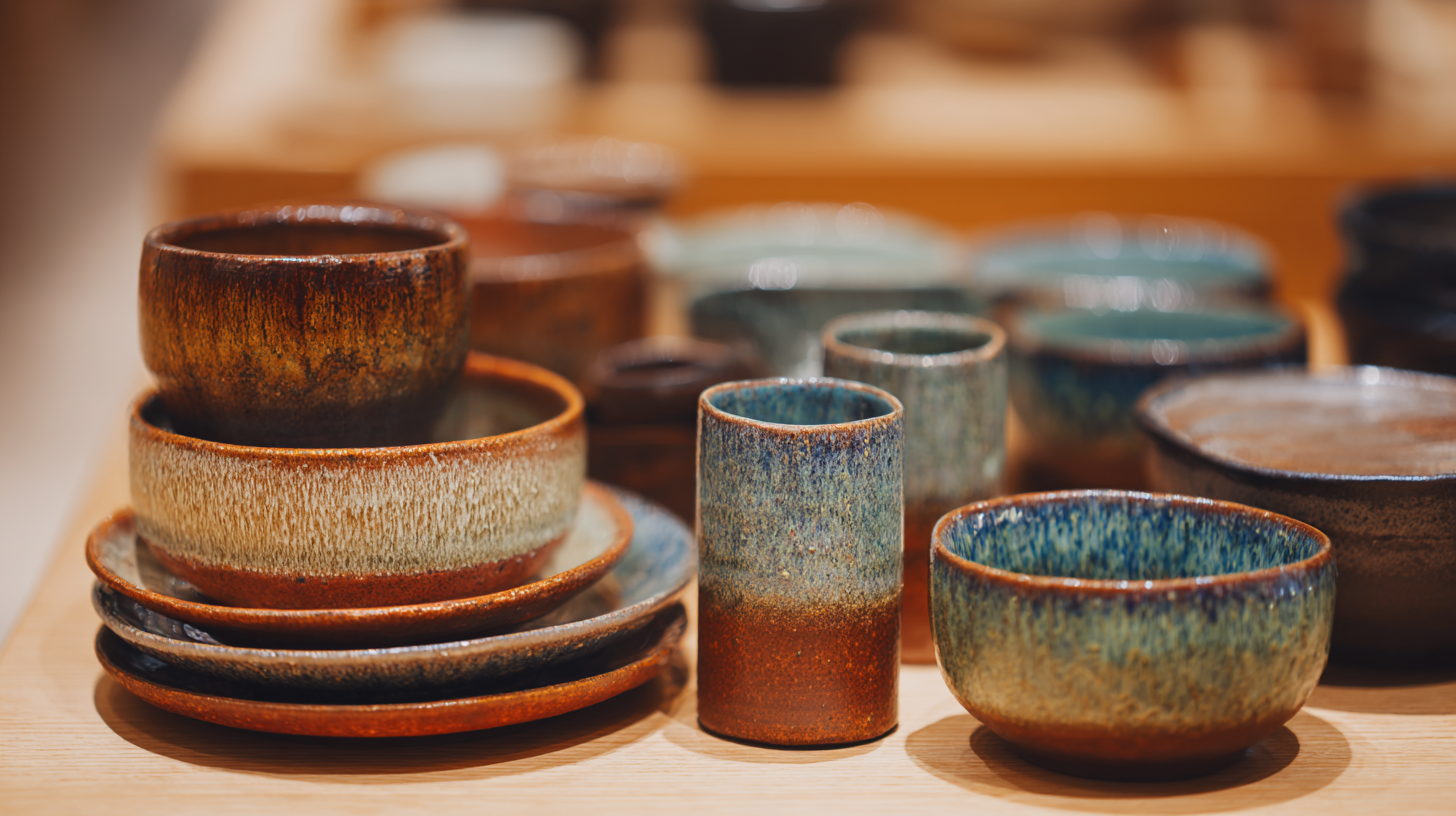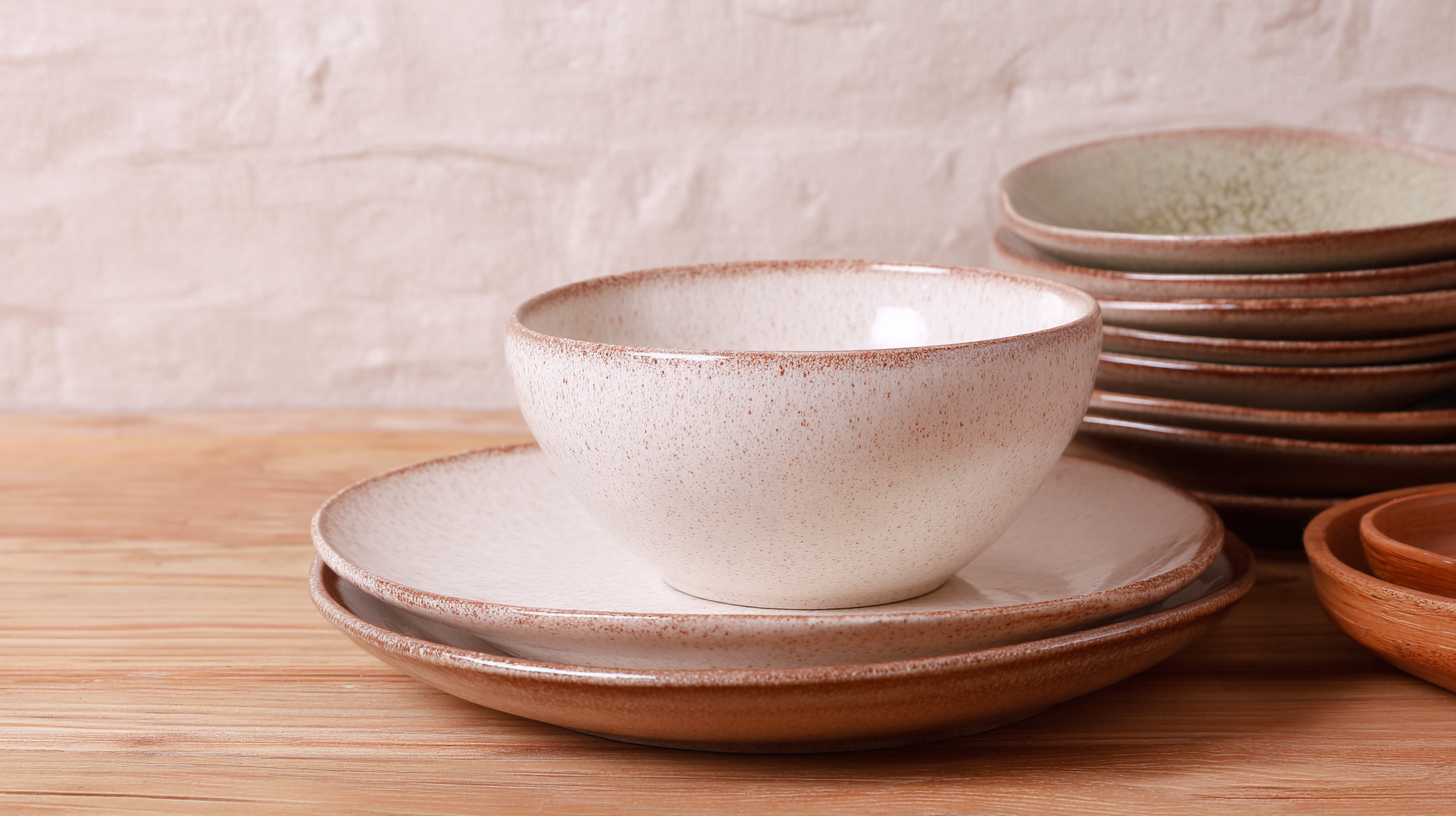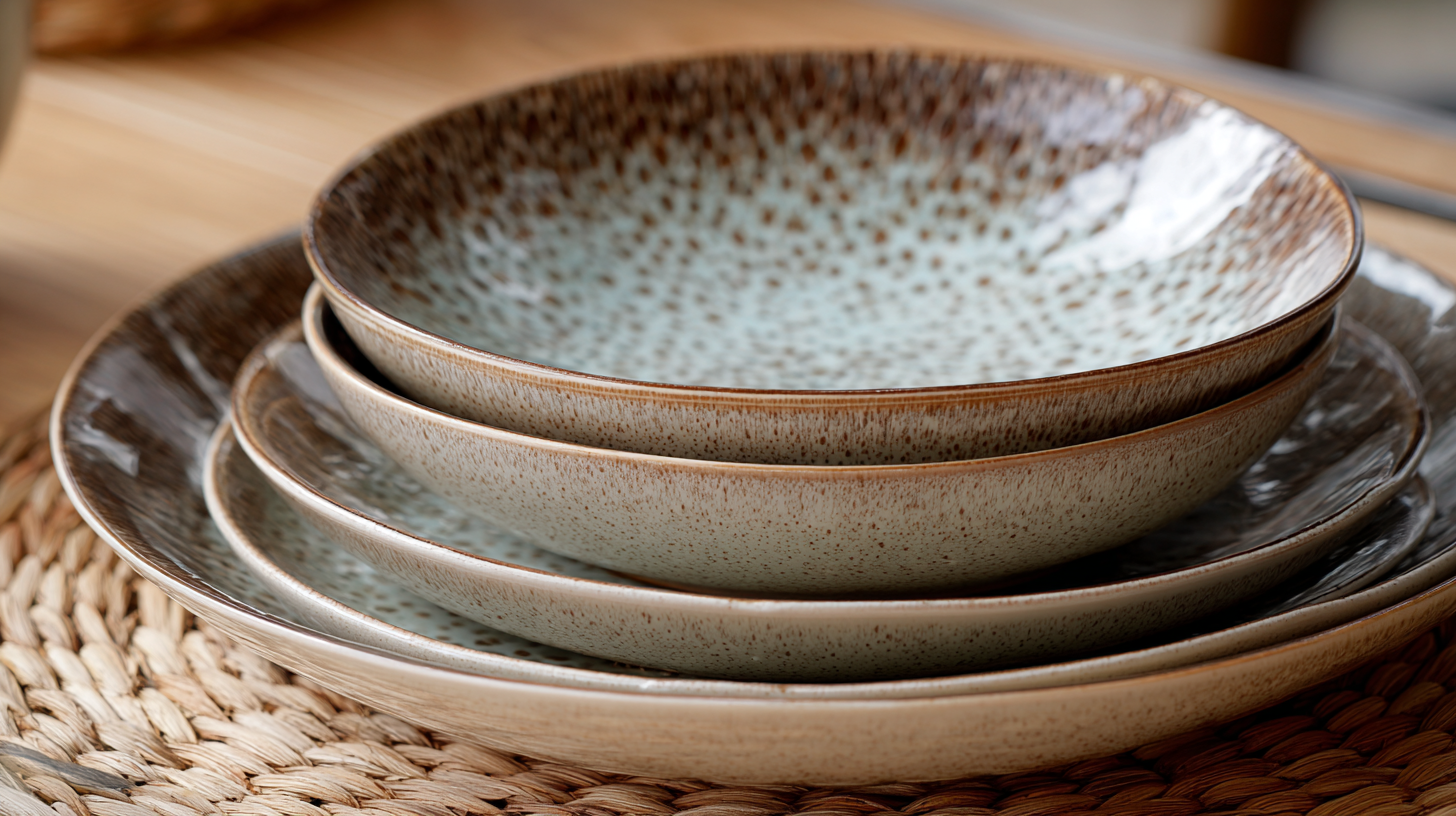

In recent years, there has been a growing interest in the impact of tableware materials on health and dining experiences, with numerous studies highlighting the benefits of using Ceramic Tableware. Research indicates that ceramic materials are non-toxic, durable, and often free from harmful chemicals found in plastics and some metals, making them a safer choice for everyday use. According to a report from the World Health Organization, the use of safer food contact materials can significantly reduce health risks associated with chemical leaching during food preparation and consumption. Additionally, ceramic tableware has been shown to enhance the aesthetic appeal of dining experiences, contributing to improved food presentation and enjoyment. As consumers become increasingly health-conscious, the shift towards Ceramic Tableware not only supports personal well-being but also aligns with broader sustainability goals in the dining industry.

Ceramic tableware offers several health benefits that make it a superior choice for dining. One of the key advantages is its non-toxic nature; unlike some materials, ceramic does not leach harmful chemicals into food. This characteristic is crucial for maintaining a healthier lifestyle, especially as concerns about toxins in cookware and dining ware continue to rise. Furthermore, ceramic dishes and utensils are often free from materials like PFAS, which are known for their harmful effects.
In addition to being safer for health, ceramic tableware is celebrated for its durability and heat retention properties. It conducts heat evenly, allowing for better cooking performance and preserving the flavor of food. Recent tests of ceramic cookware have shown that it can outperform many traditional non-stick options, making it a wise investment for both quality and health. As consumers become more health-conscious, opting for ceramic tableware not only enhances the dining experience but also ensures meals are prepared and served in a safer environment.

Ceramic tableware has gained popularity not only for its aesthetic appeal but also for its health benefits, particularly due to its antimicrobial properties. Numerous studies have indicated that ceramics can significantly reduce bacterial growth on their surfaces. According to a report by the Food and Drug Administration (FDA), certain types of ceramic materials have been shown to inhibit the growth of pathogens such as E. coli and Salmonella by more than 90% within a few hours of exposure. This characteristic can be crucial in preventing foodborne illnesses, making ceramic dishes a safer choice for dining.
The inherent structure of ceramic materials contributes to their effectiveness in minimizing bacterial contamination. Unlike plastic or wooden utensils, which can harbor bacteria in their microscopic crevices, ceramics provide a non-porous surface that is easier to clean and less likely to retain harmful microorganisms. A study published in the Journal of Applied Microbiology found that ceramic tableware maintained lower bacterial counts than glass or plastic alternatives after being subjected to common dining conditions. This not only enhances hygiene but also supports a healthier dining experience overall, reinforcing the case for integrating ceramic tableware into our daily lives.

When considering the safety of dinnerware, the issue of leaching is paramount. Recent warnings from regulatory agencies about certain types of plastic and nonstick cookware have raised concerns about harmful substances like lead leaching into food. This underscores the advantage of ceramic tableware, which is generally considered a safer alternative. Unlike plastic, ceramic is less likely to leach harmful chemicals, especially when properly manufactured and coated. Furthermore, ceramic materials are frequently free from toxins, making them a healthier choice for both cooking and serving meals.
In comparison, plastic dishware can pose significant health risks, particularly when exposed to heat in microwaves. Experts advise against heating food in plastic containers due to the potential for toxic substances to leach into the food. The accumulation of such hazards in everyday kitchenware creates a pressing need for consumers to be informed about safer alternatives. By opting for ceramic tableware, diners not only enhance their dining experience but also protect their health, ensuring that their meals are enjoyed without the worry of contamination.
| Material | Leaching Risk | Durability | Heat Resistance | Aesthetic Appeal | Environmental Impact |
|---|---|---|---|---|---|
| Ceramic | Low | High | Up to 1500°F | Elegant | Bio-degradable |
| Plastic | Moderate to High | Moderate | Up to 300°F | Variable | Non-biodegradable |
The sustainability impact of ceramic production is a crucial consideration in the quest for a healthier dining experience. Unlike conventional tableware materials, ceramics are often produced using processes that prioritize energy efficiency. Advances in kiln technology have allowed for lower energy consumption during firing, significantly reducing the carbon footprint associated with their production. By utilizing renewable energy sources and optimizing firing temperatures, manufacturers can minimize the ecological impact while delivering durable and aesthetically pleasing tableware.
Moreover, ceramic tableware boasts a longer lifespan compared to alternatives like plastic or paper products. This durability reduces the frequency of replacements, leading to less waste and a decreased demand for raw materials. The longevity and recyclability of ceramics contribute to a more sustainable lifecycle. As consumers become increasingly aware of their environmental footprint, choosing ceramic tableware not only enhances their dining experience but also promotes a more sustainable approach to consumption. Embracing ceramics can thus play a pivotal role in fostering environmental responsibility while enjoying the multitude of benefits associated with this traditional yet innovative material.
The aesthetic appeal of ceramic tableware significantly enhances the dining experience, impacting both appetite and overall enjoyment. Research shows that visually attractive environments can improve perceptions of food quality, leading to increased satisfaction during meals. As diners increasingly gravitate towards Instagram-worthy dining spots, the connection between aesthetics and appetite cannot be overlooked. In fact, a study revealed that food presented in beautiful settings is often rated as tasting better, highlighting the strong psychological effects of visual presentation on our dining experiences.
To create a healthier dining environment, consider the following tips. First, invest in vibrant ceramic tableware that complements your culinary creations, as this not only elevates the meal's appearance but also encourages mindful eating. Second, pay attention to the arrangement of your table settings—tableware that features pleasing colors and shapes can positively influence your guests' appetites. Lastly, create a harmonious dining space by incorporating art or other aesthetic elements that align with the visual appeal of your tableware, enhancing the overall atmosphere and making every meal a special occasion.






